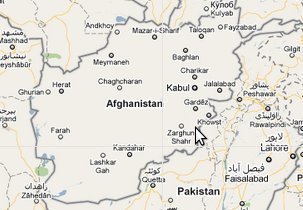
Here is a list of cities in Afghanistan ordered by their population according to data from GeoNames.org. Note that their exact naming and spelling might be slightly different in the native language used in Afghanistan, but this is a very close approximation.
| List of Cities in Afghanistan | ||
|---|---|---|
| Kabul – 3,043,532 | ||
| Kandahar – 391,190 | ||
| Mazar-e-Sharif – 303,282 | ||
| Herat – 272,806 | ||
| Jalalabad – 200,331 | ||
| Kunduz – 161,902 | ||
| Ghazni – 141,000 | ||
| Balkh – 114,883 | ||
| Baghlan – 108,449 | ||
| Gardez – 103,601 | ||
| Khost – 96,123 | ||
| Taloqan – 64,256 | ||
| Pol-e Khumri – 56,369 | ||
| Sheberghan – 55,641 | ||
| Charikar – 53,676 | ||
| Sar-e Pol – 52,121 | ||
| Lashkar Gah – 43,934 | ||
| Farah – 43,561 | ||
Kabul: Afghanistan’s Capital City Its Kabul stands as a testament to Afghanistan’s vibrant national spirit. Home to over 4 million residents, it serves as both the largest city and an eclectic melting pot of cultures and traditions. Kabul’s rapid development presents both opportunities and challenges to its residents.
Kandahar: An Historical Hub
Kandahar is one of Afghanistan’s second-largest cities and serves as an epicenter for Afghan history. Nicknamed the “City of Brave Men”, Kandahar boasts an abundant cultural legacy as it currently hosts approximately 614,118 residents. Despite its historical importance, Kandahar now faces modern-day complications that must be faced head on in order to survive and prosper.
Herat: A Cultural Gem
In the west lies Herat, an artistic city rich with arts and literature. With an estimated population of 436,300 residents, it has served as an ancient crossroads between civilizations for millennia. With stunning architecture and lively bazaars that display its cultural importance.
Mazar-i-Sharif, popularly dubbed as “The Blue City” due to the hue of its mosque, is another urban gem in Iran’s north that hosts approximately 693,000 residents and boasts an acclaimed economy as well as diverse traditions.
Jalalabad: Afghanistan’s Gateway to the East
Jalalabad serves as Afghanistan’s eastern gateway, boasting a population of around 356,274. As one of Afghanistan’s primary trade hubs and economic centers, it connects Afghanistan with neighboring countries through trade and economic activities.
Cities in the Northern Region
The northern region is filled with cities that each have their own distinctive identities, with cities like Balkh, Kunduz and Taloqan serving as focal points contributing to cultural and economic diversity throughout Afghanistan.
Cities in the Western Region Kandahar, Farah and Zaranj cities play key roles in reflecting not only the challenges but also resilience of their inhabitants in this part of Afghanistan.
Cities in the Eastern Region
The eastern region, home to Gardez, Khost and Ghazni, has seen both success and failure over its history. Today these cities continue to evolve within a fast-changing global society.
Cities in the Southern Region
In Afghanistan’s south, cities such as Lashkar Gah, Helmand, and Tarin Kowt play an essential part of its fabric. While facing security concerns, these cities exemplify Afghan spirit while being vital hubs of commerce.
Emerging Urban Centers
Afghanistan is rapidly evolving and so are its urban centers. Cities like Puli Khumri, Samangan and Sheberghan are emerging as key contributors to national progress and growth, serving as key catalysts.
Remote Cities
Amidst Afghanistan’s harsh landscapes, cities such as Chaghcharan, Firozkoh, and Feyzabad remain resilient. These remote cities capture the essence of Afghanistan’s diverse geography as well as the struggles its residents must contend with daily.
Urban Growth and Development mes Afghanistan’s urbanization is marked by both rapid development and challenges. Rapid migration to cities brings opportunities for economic progress while straining infrastructure and resources; therefore requiring careful planning.
Cities offer hope of better lives; yet cities also present difficulties such as overpopulation, inadequate infrastructure and security concerns. Balancing development with cultural preservation poses an insurmountable task.
Conclusion
Afghanistan is home to numerous cities that each make unique contributions to the nation. From historical significance to modern development and challenges faced and triumphs attained, these urban centers make up Afghanistan’s intricate fabric.
Are You New Here and Wondering Which City Is the Largest One in Afghanistan?
Kabul holds the crown as Afghanistan’s largest city.
Which city in Afghanistan is often known as the “Heart”?
Kandahar has historically been considered to be at the core of Afghanistan, hence earning it this title.
What challenges do Afghan cities face?
Afghan cities face numerous issues related to overpopulation, insufficient infrastructure and security risks.
How is Afghan culture impacting urban centers?
Afghan culture exerts profound sway over architecture, traditions and lifestyle choices found within urban settings of Afghanistan.
Are any ancient cities still inhabited in Afghanistan?
Yes. For instance, cities like Balkh and Herat boast ancient origins while remaining inhabited to this day.
